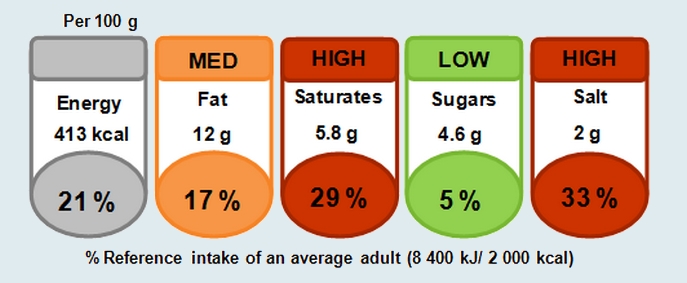
Nutritional labelling
Nutritional labelling provides a basis for consumers to make informed choices in relation to the food they consume.
In the following texts you will learn more about nutritional labelling.

The label is the first contact of a consumer with the nutritional composition of a food.
Information on nutritional characteristics of a food will enable consumers, including those with special dietary requirements, to make informed choices.
Moreover, the label also includes information regarding the presence of all the ingredients used to manufacture the food, and allergens, plus other data.
The label also contains information concerning the storage, use conditions and/or time limit for consumption.
Regulation (EU) No 1169/2011 - introduces new rules on the mandatory nutrition labelling in all European Union state members from 13 December 2014 for pre-packaged food which already had nutrition information and from 13 December 2016 for pre-packaged food without any nutrition information.

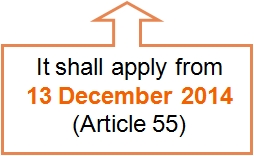
- Name of the food
- List of ingredients
- Any ingredient or processing aid causing allergies or intolerances
- Quantity of certain ingredients
- Net quantity of the food
- Date of minimum durability or the "use by" date
- Any special storage conditions and/or conditions of use
- Name or business name and address of the food business operator
- Country of origin or place of provenance
- Instructions for use
- Beverages containing more than 1.2% by volume of alcohol, the actual alcoholic strength by volume
- Nutrition declaration
Regulation (EU) No 1169/2011, Article 9
List of ingredients: It shall include all the ingredients of the food, in descending order of weight, as recorded at the time of their use in the manufacture of the food.
Regulation (EU) No 1169/2011, Article 18
Minimum durability date, "use by" date and date of freezing: Means the date until which the food retains its specific properties when properly stored. In the case of foods which, from a microbiological point of view, are highly perishable and are therefore likely after a short period to constitute an immediate danger to human health, the date of minimum durability shall be replaced by the "use by" date.
Regulation (EU) No 1169/2011, Article 24
Storage conditions or conditions of use: In cases where foods require special storage conditions and/or conditions of use, those conditions shall be indicated. To enable appropriate storage or use of the food after opening the package, the storage conditions and/or time limit for consumption shall be indicated, where appropriate.
Regulation (EU) No 1169/2011, Article 25
According to Regulation (EU) No 1169/2011:
"The nutrition declaration for a food concerns information on the presence of energy and certain nutrients in foods".
To facilitate the comparison of products in different package sizes, it is appropriate to retain the requirement that the mandatory nutrition declaration should refer to 100 g or 100 ml amounts and, if appropriate, to allow additional portion-based declarations.
With respect to nutritional declaration, there are some components that are mandatory and others are optional. Therefore producers can choose a more complete nutritional declaration or a brief one, including only the mandatory information.

Mandatory nutritional declaration:
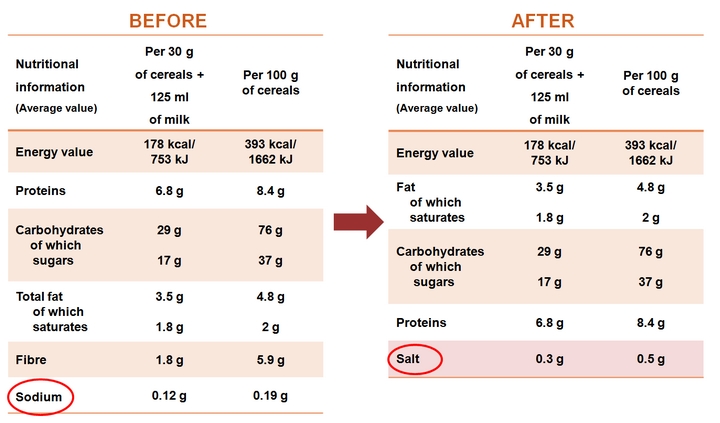
An example of an European food label:
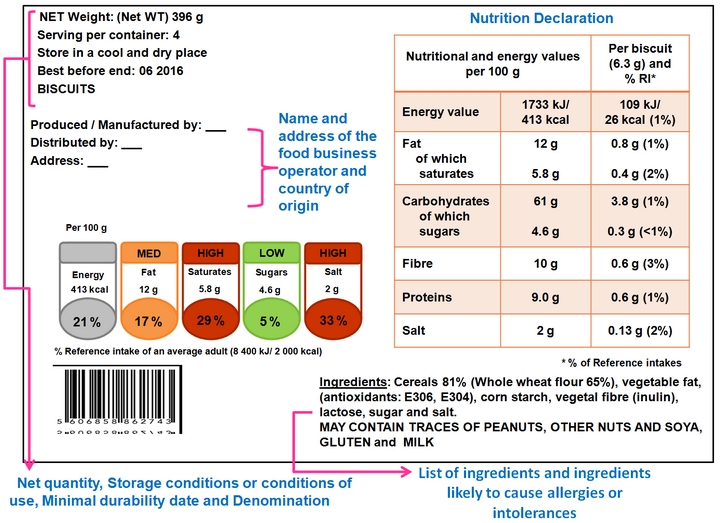
Sometimes, in order to facilitate, nutrition information is provided on the front of the package using traffic light colours.
Please see the example bellow:
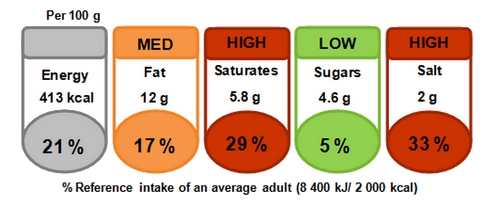
The different colours of the traffic light are given to show whether a product has a high (red), medium (orange) or low (green) content in fat, saturates, sugars and salt. This information can be provided by 100 g or by portion.
This scheme will help consumers to quickly perform an informed choice. However, consumers should also take into account the information regarding allergens and other components that is available on the back of the package under the ingredients section.
If you want to learn more about individual nutrients please go to What you should know section.
Reference intakes (RIs) set the maximum value for energy and selected nutrients that should be ingested per day. The following values are the RIs for an average adult (8 400 kJ/ 2 000 kcal).
Therefore, RIs may be different between subjects, since these depend on age, gender, physical activity level and health status, among others.

